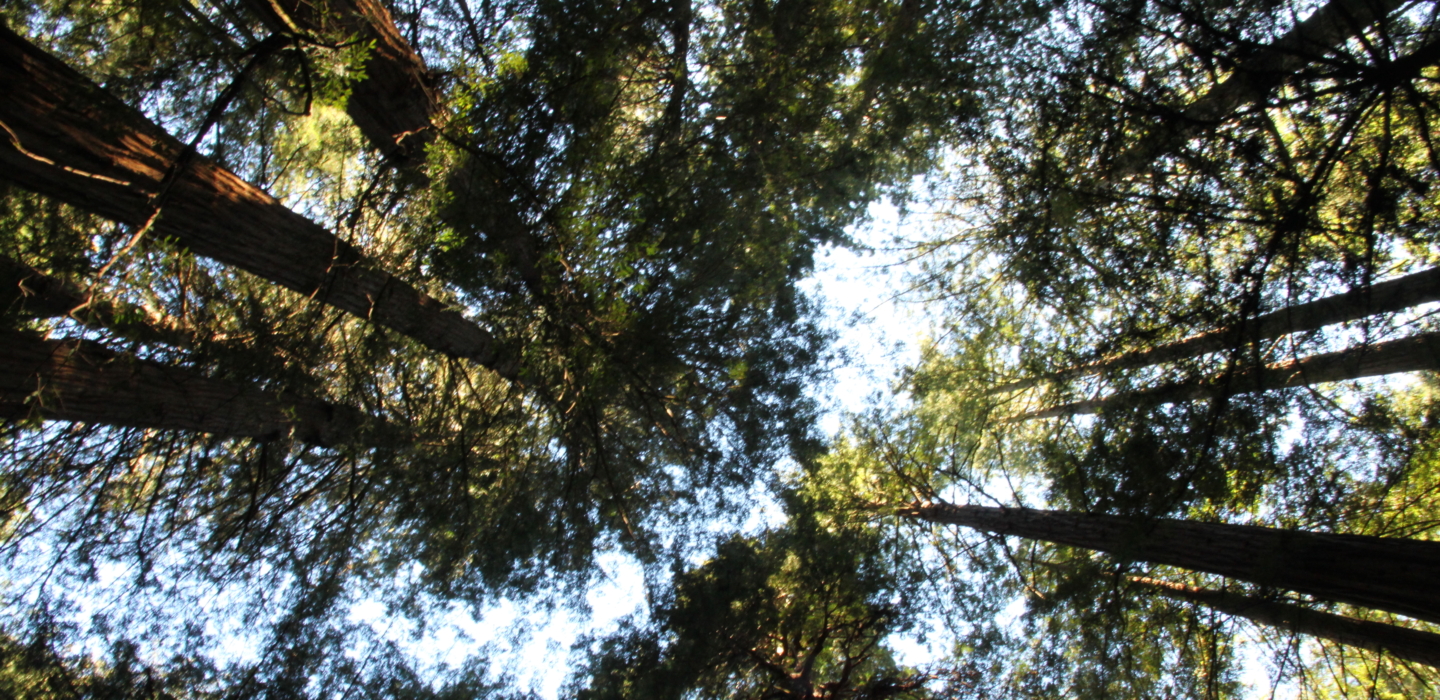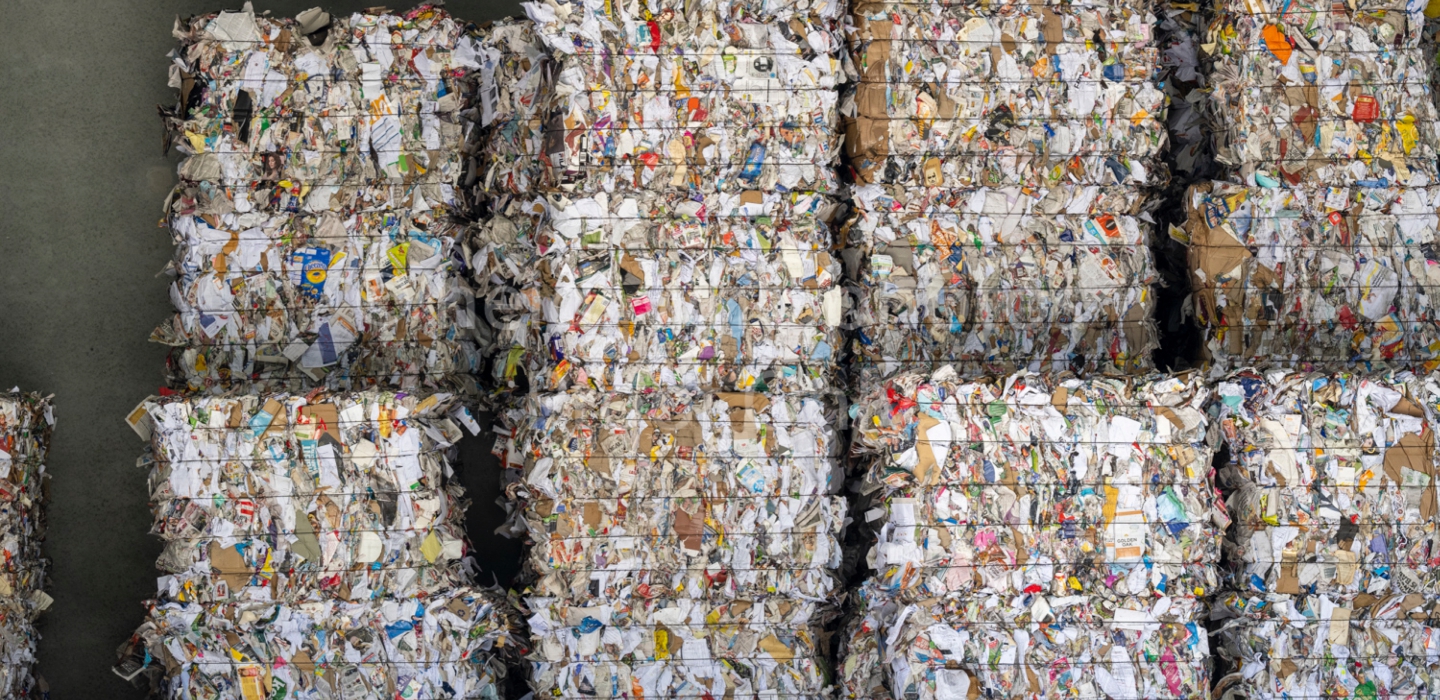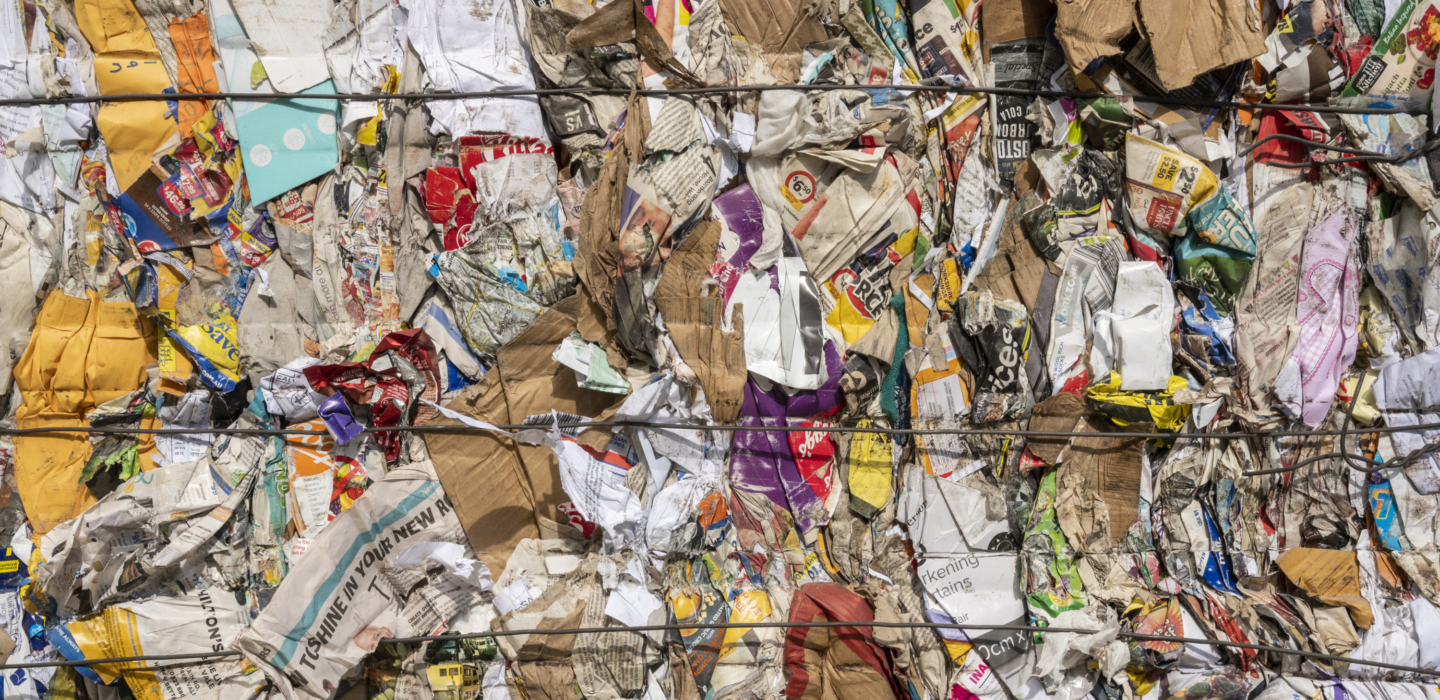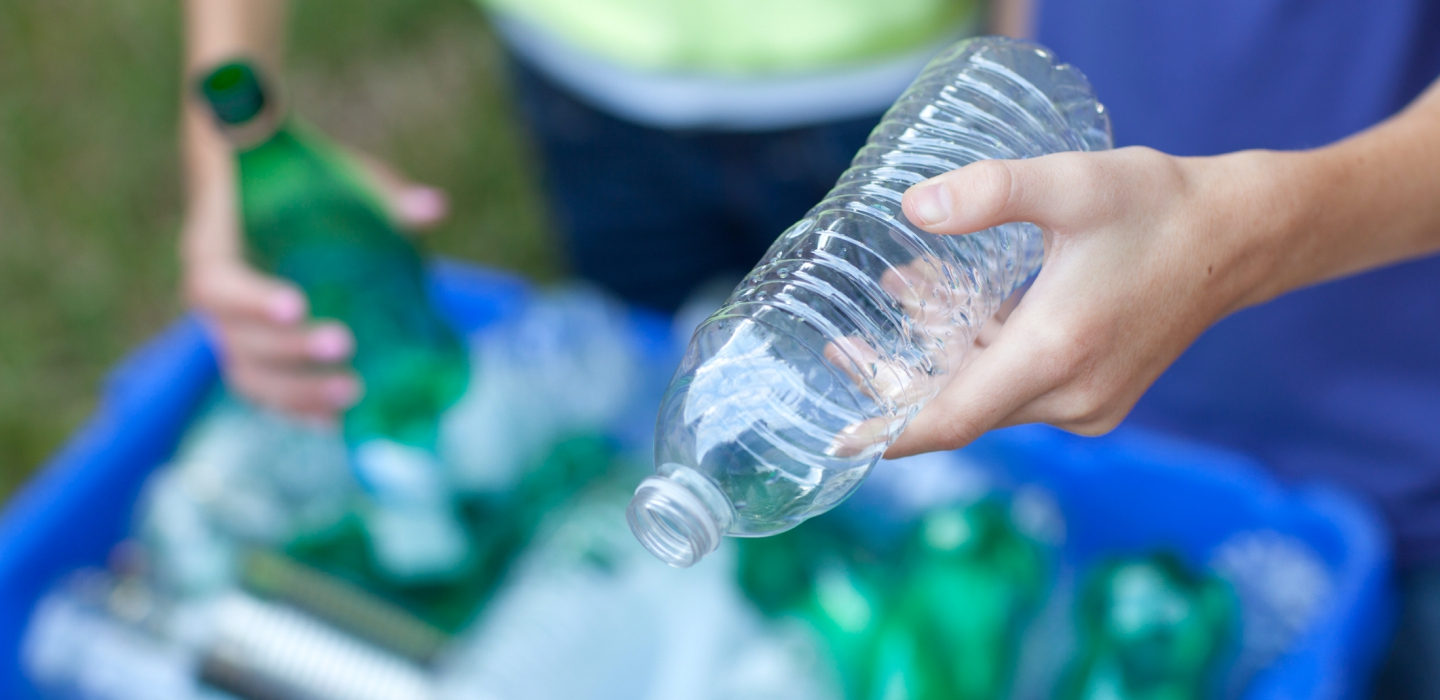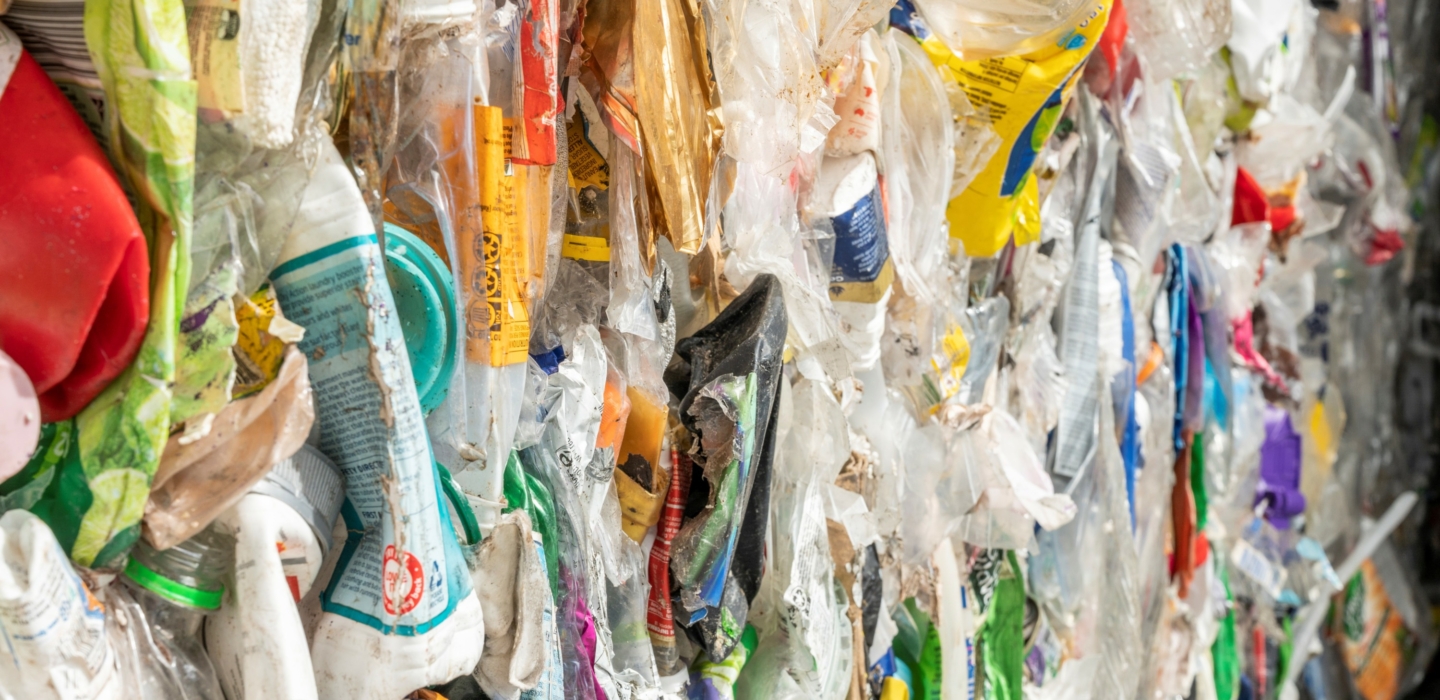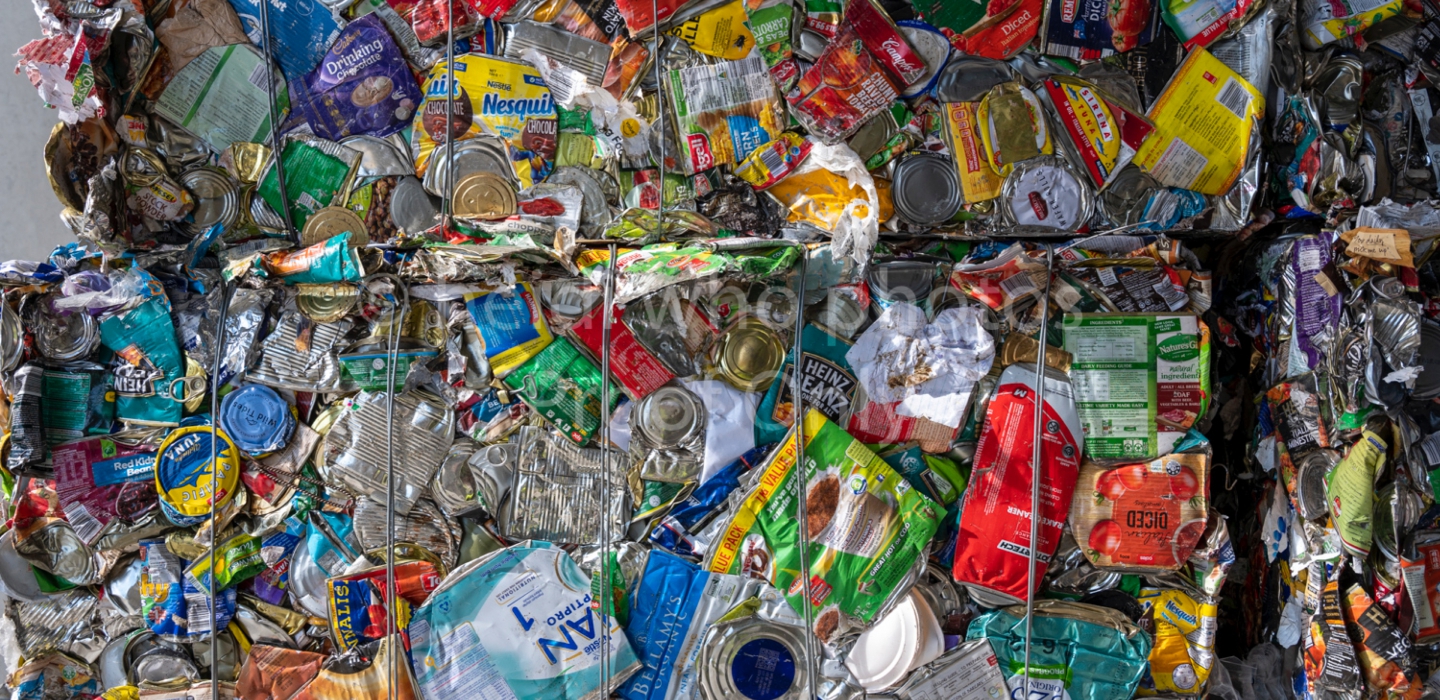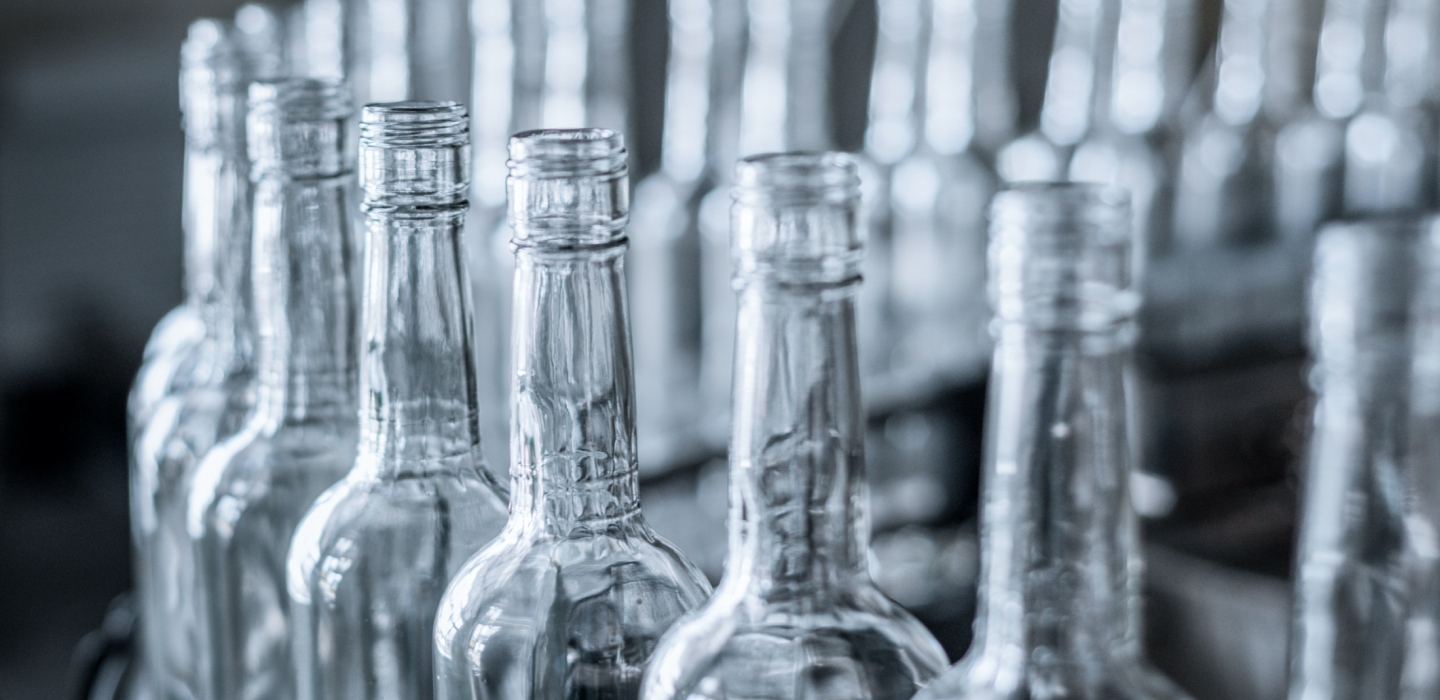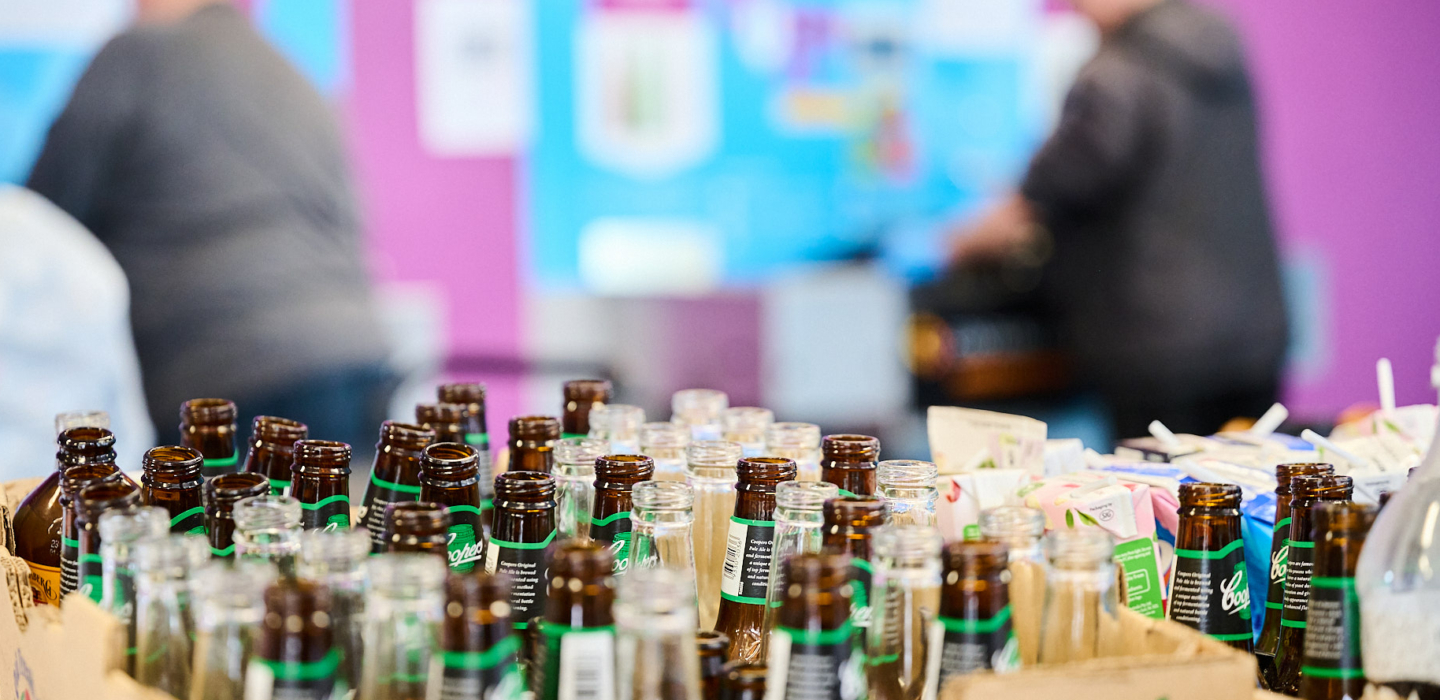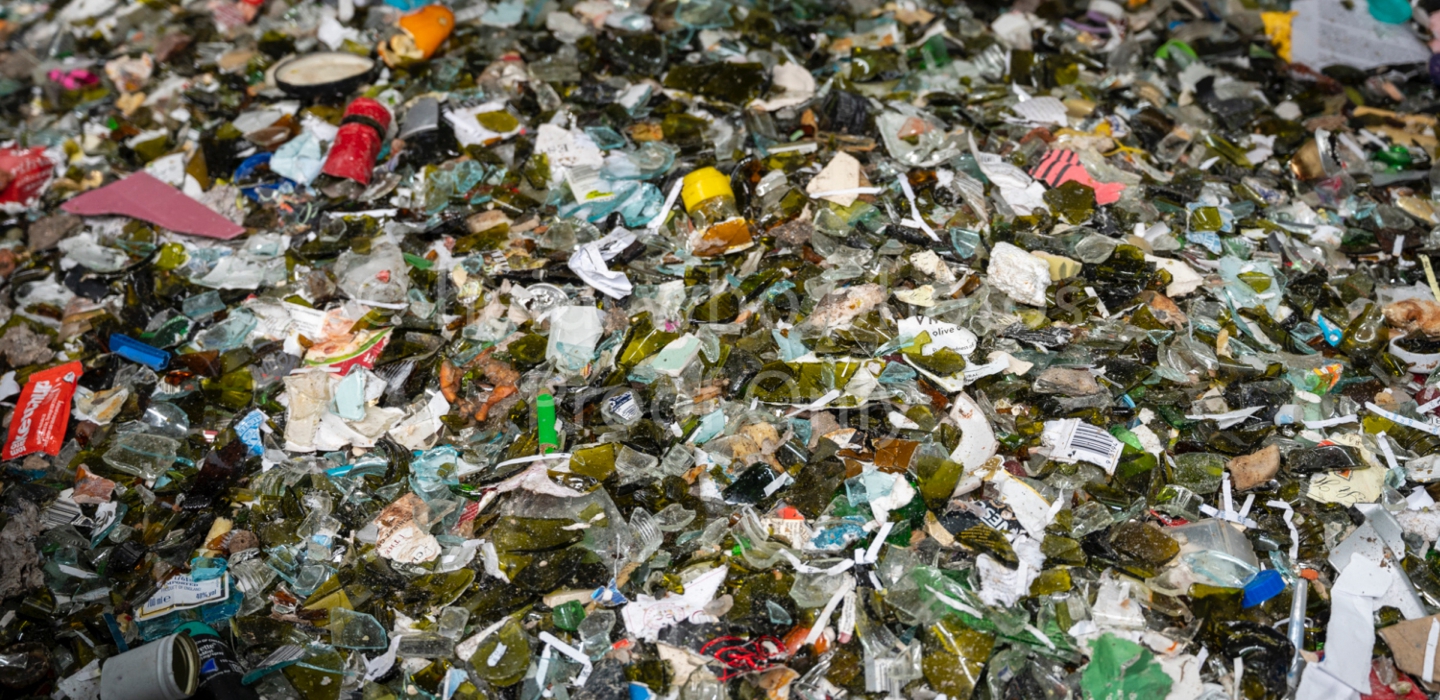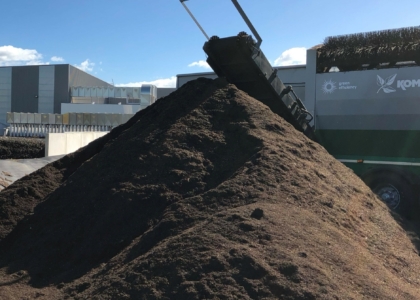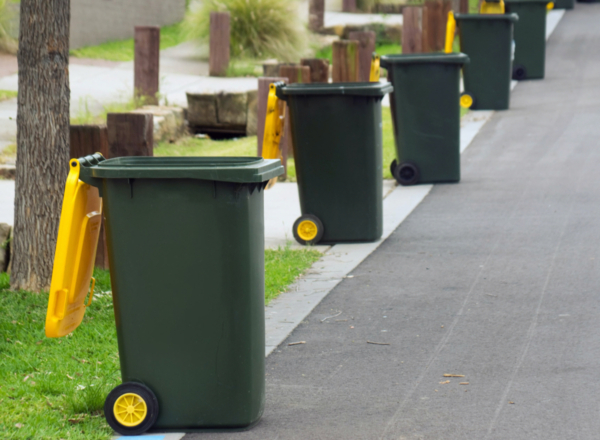
When community members recycle through the Yellow Bin, the materials are recovered to create new products and help form a circular economy. Yellow bin products include Paper & Cardboard, Glass, Plastics and Metal. They are re-cycled from discarded materials into new products.
Re.Group's Material Recovery Facilities are designed to efficiently maximise the recovery of our environment's limited resources and restore them into usable products, once again.
Paper
What paper & cardboard can be recycled?
The paper & cardboard that can be recycled in the yellow or blue bin generally includes all coloured paper, envelopes, newspapers, magazines, cardboard and printed documents.
How is paper & cardboard recycled into products?
1. Collection.
Paper and cardboard is collected from households and businesses though the yellow bin and sent to a nearby Material Recovery Facility for processing.
2. Separation
Paper and cardboard are separated from other materials first.
3. Baling
Paper and cardboard is compressed into bales.
4. Delivery
Paper and cardboard products are then sold and delivered to Re.Group's partners.
5. Paper pulping & de-inking
Paper and cardboard is turned into pulp by heating it and adding water. The pulp is then strained to remove any remaining contaminants.
6. New paper & cardboard products
Recycled paper and cardboard are used in a wide variety of new paper and cardboard products.
Plastic
What plastic can be recycled?
The plastic that can be recycled is rigid plastic including most bottles, containers and household packaging.
How is plastic recycled into products?
1. Collection.
Plastic is collected from households and businesses though the yellow bin and sent to a nearby Material Recovery Facility for processing.
2. Sorting
The plastic, glass and metals are separated from each other and graded depending on type.
Size and shape, density, magnetic properties, and ultraviolet, infrared and visible light detection are all used to separate different items into different streams.
3. Baling
Plastic is compressed into bales.
4. Delivery
Products are then sold and delivered to Re.Group's partners.
5. Plastics processing
Plastics are shredded, washed, and melted.
6. New plastic products
The recycled plastic is then used to create innovative new products from new drink containers to clothing and garden tools and furniture.
Metal
What metal can be recycled?
The metal that can be recycled in the yellow bin includes non-ferrous metals such as aluminium cans as well as tin containers.
How is Metal recycled into products?
1. Collection.
Metals are collected from households and businesses though the yellow bin and sent to a nearby Material Recovery Facility for processing.
2. Sorting
The plastic, glass and metals are separated from each other and graded depending on type.
Size and shape, density, magnetic properties, and ultraviolet, infrared and visible light detection are all used to separate different items into different streams.
3. Baling
Metals are compressed into bales.
4. Delivery
Products are then sold and delivered to Re.Group's partners.
5. Metal melting
The metal is blasted with hot air to remove any paint and then melted down.
6. New metal products
Melted metal is poured into moulds to turn into new products.
Glass
What glass can be recycled?
The glass that can be recycled in the yellow bin includes bottles or jars.
How is glass recycled into products?
1. Collection.
Glass is collected from households and businesses though the yellow bin and sent to a nearby Material Recovery Facility for processing.
2. Sorting
The plastic, glass and metals are separated from each other and graded depending on type.
Size and shape, density, magnetic properties, and ultraviolet, infrared and visible light detection are all used to separate different items into different streams.
3. Processing & sorting
Glass is is either recovered as cullet for bottle to bottle markets, or crushed with machines to form a 'glass sand' product.
At some plants glass is sorted by colour into three categories; clear, green or brown.
4.a. Glass crushing and melting
Clean glass cullet is crushed and melted in a furnace to form a liquid. The melted glass is then set in moulds to create new glass containers or bottles.
4.b. New glass sand products
Glass sand is created at our sites and used as a more sustainable substitute for virgin sand in road construction and other local projects.
